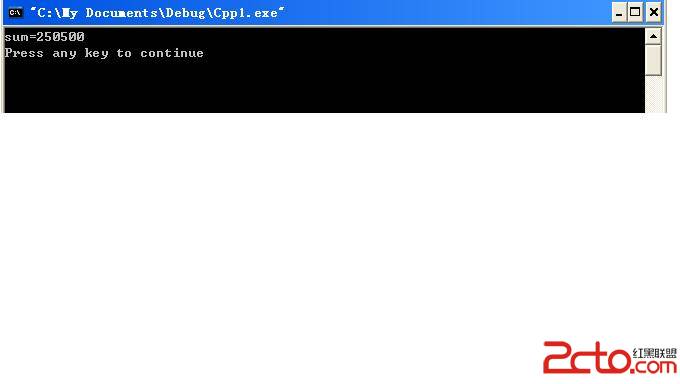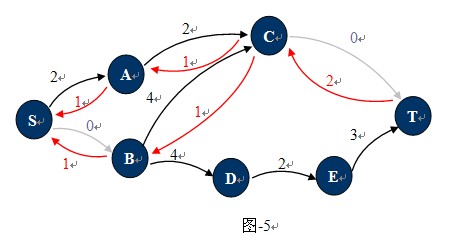UVA 537 - Artificial Intelligence?
Physics teachers in high school often think that problems given as text are more demanding than pure computations. After all, the pupils have to read and understand the problem first!So they don't state a problem like ``U=10V, I=5A, P=?" but rather like ``You have an electrical circuit that contains a battery with a voltage of U=10V and a light-bulb. There's an electrical current of I=5A through the bulb. Which power is generated in the bulb?".
However, half of the pupils just don't pay attention to the text anyway. They just extract from the text what is given: U=10V, I=5A. Then they think: ``Which formulae do I know? Ah yes, P=U*I. Therefore P=10V*5A=500W. Finished."
OK, this doesn't always work, so these pupils are usually not the top scorers in physics tests. But at least this 易做图 algorithm is usually good enough to pass the class. (Sad but true.)
Today we will check if a computer can pass a high school physics test. We will concentrate on the P-U-I type problems first. That means, problems in which two of power, voltage and current are given and the third is wanted.
Your job is to write a program that reads such a text problem and solves it according to the 易做图 algorithm given above.
Input
The first line of the input file will contain the number of test cases.
Each test case will consist of one line containing exactly two data fields and some additional arbitrary words. A data field will be of the form I=xA, U=xV or P=xW, where x is a real number.
Directly before the unit (A, V or W) one of the prefixes m (milli), k (kilo) and M (Mega) may also occur. To summarize it: Data fields adhere to the following grammar:
DataField ::= Concept '=' RealNumber [Prefix] Unit
Concept ::= 'P' | 'U' | 'I'
Prefix ::= 'm' | 'k' | 'M'
Unit ::= 'W' | 'V' | 'A'
Additional assertions:
The equal sign (`=') will never occur in an other context than within a data field.
There is no whitespace (tabs,blanks) inside a data field.
Either P and U, P and I, or U and I will be given.
Output
For each test case, print three lines:
a line saying ``Problem #k" where k is the number of the test case
a line giving the solution (voltage, power or current, dependent on what was given), written without a prefix and with two decimal places as shown in the sample output
a blank line
Sample Input
3
If the voltage is U=200V and the current is I=4.5A, which power is generated?
A light-bulb yields P=100W and the voltage is U=220V. Compute the current, please.
bla bla bla lightning strike I=2A bla bla bla P=2.5MW bla bla voltage?
Sample Output
Problem #1
P=900.00W
Problem #2
I=0.45A
Problem #3
U=1250000.00V
花了一段时间debug,后来发现是最后要打印出两行的空行!只打印一行就会WA!
[cpp]
#define RUN
#ifdef RUN
#include <stdio.h>
#include <stdlib.h>
#include <string.h>
#include <assert.h>
#include <string>
#include <iostream>
#include <sstream>
#include <map>
#include <set>
#include <vector>
#include <list>
#include <cctype>
#include <algorithm>
#include <utility>
#include <math.h>
using namespace std;
#define MAXN 105
string buf;
double getValue(int loc){
int i;
string val;
double c = 1;
for(i=loc+1; i<buf.length(); i++){
if(isdigit(buf[i]) || buf[i]=='.' || buf[i]=='-' || buf[i]=='e' ){
val += buf[i];
}
else if(buf[i] == 'm'){
c = 1e-3;
}
else if(buf[i] == 'k'){
c = 1e3;
}
else if(buf[i] == 'M'){
c = 1e6;
}
else{
break;
}
}
//cout << "val.c_str():" << val.c_str() << endl;
double ret = atof(val.c_str())*c;
if(ret == 0){
ret = 0;
}
return ret;
}
void play(){
//cout << buf << endl;
int loc1 = buf.find("=");
//cout << loc1 << endl;
int loc2 = buf.find("=", loc1+1);
//cout << loc2 << endl;
bool useU = false, useI = false, useP = false;
double U = 0, I = 0, P = 0;
switch (buf[loc1-1])
{
case 'U':
U = getValue(loc1);
useU = true;
break;
case 'I':
I = getValue(loc1);
useI = true;
break;
case 'P':
P = getValue(loc1);
useP = true;
break;
}
switch (buf[loc2-1])
{
case 'U':
U = getValue(loc2);
useU = true;
break;
case 'I':
I = getValue(loc2);
useI = true; 补充:软件开发 , C++ ,
上一个:PKU3481(Double Queue)STL-map
下一个:枚举类型
- 更多C/C++疑问解答:
- 关于c++的cout输出的问题。
- 在学校里学过C和C++,不过学的很一般,现在自学C#,会不会很难?
- 全国计算机二级C语言笔试题
- 已知某树有2个2度结点,3个3度结点,4个4度结点,问有几个叶子结点?
- c++数据结构内部排序问题,整数排序
- 2012九月计算机二级C语言全国题库,,急求急求
- 如果assert只有一个字符串作为参数,是什么意思呢?
- C语言中,哪些运算符具有左结合性,哪些具有右结合性,帮忙总结下,谢谢了!
- 为什么用结构体编写的程序输入是,0输不出来啊~~~
- 将IEEE—754的十六进制转化为十进制浮点类型,用C或C++都行,多谢各位大侠啊,非常感谢!
- 为什么这个程序求不出公式?
- 这个链表倒置的算法请大家分析下
- c语言函数库调用
- C语言unsigned int纠错
- C语言快排求解啊





